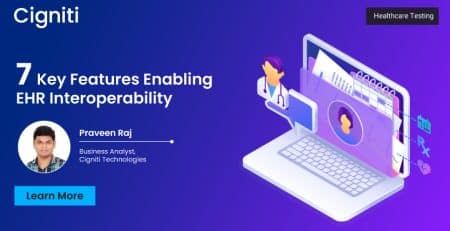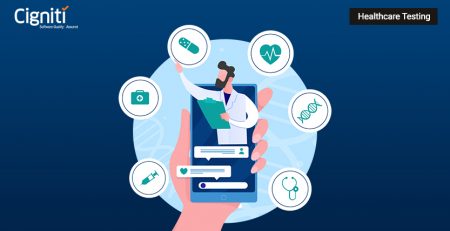Healthcare Technological Advancements in Evidence-Based Medicine
|
Listen on the go!
|
Technological advancements in healthcare, such as AI-driven diagnostics and telemedicine platforms, are reshaping the landscape of patient care by enhancing accessibility, efficiency, and precision in medical treatments.
Most clinical practice is based on a small amount of data, primarily from textbooks, outdated premises, unreliable research or case studies, fragmentary or unendorsed reviews, and anecdotal or personal clinical experience. Because of a lack of awareness or understanding of the available data, proven therapies with substantial evidence are neglected, and clinicians frequently do not believe that outcomes reported in clinical trials can be easily translated into clinical practice. The development of clinical, administrative, and outcomes research studies and the growing interest in the drivers of healthcare costs have all pushed for a more logical approach to clinical decision-making.
Evidence-based Medicine, which gained popularity in the early 1990s, replaces the conventional concept of “medicine by authority” with a more discerning scientific approach that avoids using unapproved and unsystematic data. These advances have made it necessary for healthcare professionals and management to be aware of, critically appraise, and utilize peer-reviewed published data in a systematic manner.
Evidence-Based Medicine
Evidence-based medicine (EBM) is a method of treating clinical problems that combines the finest research evidence with real-world clinical experience and patient values. Three English scientists, Sir Ronald Fisher, Sir Austin Bradford Hill, and Archie Cochrane, created the groundwork for evidence-based medicine and contributed to its development.
Evidence-based medicine is a discipline of medicine that tries to make individual decision-making more structured and objective by better-reflecting research evidence. Practitioners’ clinical expertise is reflected in effective and efficient diagnosis, as well as thoughtful identification and compassionate use of individual patients’ predicaments, rights, and preferences, using population-based data while respecting the fact that practitioners have great clinical expertise.
Evidence-based practices strengthen the link between knowledge and decision-making while also adding science and professionalism to the diagnosis, treatment, and patient-care processes. Furthermore, higher diagnostic and treatment error rates, as well as an increase in patient requests for information and a loss of trust in healthcare practitioners, all contribute to the growing relevance of evidence-based procedures. In the practice of evidence-based medicine (EBM), information technology (IT) is critical because it allows healthcare practitioners to access and analyze clinical evidence as they develop patient care plans. This frequently necessitates the examination of a huge amount of complex data. As a result, healthcare managers in charge of implementing information systems and EBM policies and guidelines will need to understand EBM ideas and the capabilities and limitations of various IT solutions for EBM.
Evidence-based medicine assists healthcare professionals in locating, gathering, and assessing evidence and guiding them through diagnosis and treatment procedures for patients, allowing them to provide additional benefits. Evidence-based medicine is one of the instruments that decision-makers can use to create verifiable, trustworthy, and explainable decisions due to the desire for transparency in healthcare decisions. Evidence-based medicine demonstrates the analysis of research studies that leads to a conclusion in the face of contradictory facts in the scientific literature and highlights the more important findings.
Evidence-based medicine necessitates not only conventional knowledge but also the best accessible knowledge, as well as a combination of the patient’s values and preferences, as well as clinical experience and competence. The important elements of Evidence-based Medicine are
- Knowledge and skills of the clinician
- Best clinical evidence available
- Strength of clinical evidence
- Patient’s individual values
- Patient’s pertinent conditions
Role of Technology in Evidence-Based Practice
The rapid pace of technological advancement in healthcare has revolutionized patient care, enabling more accurate diagnoses, personalized treatment plans, and improved overall outcomes.
Information technology is critical in the practice of evidence-based medicine because it allows healthcare practitioners to access and analyze clinical evidence as they develop patient care plans. This frequently necessitates the examination of a huge amount of complex data. As a result, healthcare managers in charge of implementing information systems and evidence-based medicine policies and guidelines will need to understand evidence-based medicine ideas and the capabilities and limitations of various IT solutions for evidence-based medicine.
HIT is a clinician’s tool for EBM that allows for patient-centered decision-making, improved patient quality and safety, and connecting patients to community and other educational initiatives to improve health literacy. It stores, shares, and analyzes health information from providers and patients. Electronic health records (EHR), patient portals or personal health records, and computerized prescriptions are all examples of health information technology (E-prescribing). It has reduced the digital distance between the patient and the practitioner, making health-related decision-making easier. Collecting patient-related data yields a wealth of information that leads to enhanced understanding and, ultimately, wisdom in patient care.
As healthcare providers move away from their paper-based comfort zones and into a digital environment or ecosystem that includes dashboards, visualization tools, and, in some cases, uncertainty, HIT adoption has been slow. The transition from paper to digital HIT is getting easier as more healthcare providers learn the principles of technology and informatics and how data can be used to influence practice and policy.
Data Standardization
Clinical data is context-dependent. Patients’ complaints, signs, symptoms, lab values, and other pertinent information are all considered. Other contextual components include data from other information systems, such as registries, clinical trial documentation, and other clinical information databases.
As a result, context is critical when contemplating data standardization. This data was collected so that comparable data could be found locally, nationally, and internationally to discover healthcare patterns that would promote EBM improvement. With the creation of Systematized Nomenclature of Medicine (SNOMED) International, methods to standardize the approach to healthcare data collection have been applied. SNOMED International, which was created in 2007, develops health terminologies that may be used across and within EHRs and healthcare systems. The mission of SNOMED is to produce, maintain, promote, and facilitate the global use and accurate usage of terms.
Evidence must be computable and interoperable inside and between healthcare systems, necessitating standardized clinical terminology. Standardized medical terminology is essential for quantifiable and retrievable data. Data in EHRs must be made machine-readable (in a format that a computer can understand) so that decision support systems can turn it into information and visualize it for doctors to utilize in EBM. Healthcare has traditionally measured quantity of care, but it has evolved to recognize the importance of patient-care value and quality and the need to update our ability to evaluate quality. Terminology standardization is required to establish the quality of patient care; without uniformity, quantifying outcomes is impossible, obviating the need for evidence-based treatment practice.
While some EHR systems have machine-readable clinical data, others must rely on natural language processing (NLP) to provide clinical care information. NLP is a component of artificial intelligence (computers’ ability to learn from what they read) that aids computers in understanding, interpreting, and manipulating human language. NLP uses computer science and computational linguistics to convert human language into a format that a machine can understand.
Standard nomenclature is necessary for interoperability and data exchange, which leads to improved analytics to support EBM.
HIT Promoting Evidence-based Medicine
Evidence-based medicine adoption is critical for physicians who want to improve clinical outcomes and accountability. The good news is that EHR platforms and other tools enable doctors and nurses to give the best evidence-based treatment possible and that the latest health IT technologies may also be leveraged to improve overall efficiency.
Evidence-based medicine is aided by health information technology:
Increased access
Doctors and nurses need access to the most up-to-date research to implement evidence-based care successfully. Providers can swiftly integrate new information into daily workflows by using digital health technologies. Practitioners and other staff members can use an EHR system to obtain and disseminate the most up-to-date research. Similarly, study results and new standards might be discussed via email or an internal message board.
In the meantime, administrators and other leaders can leverage technology to implement new evidence-based practices more effectively. Remote access to information eliminates the need for meetings or lengthy video chats.
Minimizing human error
In the healthcare industry, mistakes may be both hazardous and costly. According to Bernadette Mazurek Melynk, assistant vice president of health promotion and chief wellness officer at Ohio State University, evidence-based medicine is a vital step toward eliminating human error. Melynk explained that mistakes aren’t necessarily the consequence of carelessness but rather of misunderstandings or communication breakdowns daily. Evidence-based medicine is a method of reinforcing policies and establishing a system of best practices that accounts for errors.
When it comes to implementing evidence-based medicine, health IT solutions are crucial. Digital platforms can be used to train new doctors and nurses and distribute knowledge about a given area or specialization. As previously said, using online communication tools and systems is the best approach to ensure that all employees in a network have access to the same information. As a result, providers can reduce policy and procedure ambiguity, which could otherwise lead to dangerous errors.
Improving collaboration
Providers can quickly share useful information by using digital communication tools. Staff members, for example, could use anecdotal evidence or another point of view to enhance or reinforce a shared study.
Even better, the most recent health IT systems enable health practitioners to cooperate outside of a single health network. Colleagues and peers worldwide may quickly and securely share their findings and experiences online, resulting in a stronger, more accessible set of best practices.
It takes more than a desire for evidence-based care to encourage applying proven best practices. Digital solutions provide a foundation for such integration and enable suppliers to meet this demand.
Conclusion
Evidence-based medical methods are greatly aided using information technology. So that knowledge and specialized evidence-based clinical guidelines are easily accessible via links on the Internet, which may be utilized to improve decision-making and facilitate communication and dissemination of information. Any technology that makes it easier for healthcare professionals to gather, store, process, and retrieve information might help improve EBM. In summary, EBM is a pipe dream without the use of technology, and policymakers should make a concerted effort to increase their use of IT.
Cigniti’s extensive experience in AI, machine learning, and analytics helps businesses improve their operations and quality assurance methods.
Need help? Contact our healthcare testing experts to learn more about healthcare technological advancements in evidence-based medicine.





Leave a Reply